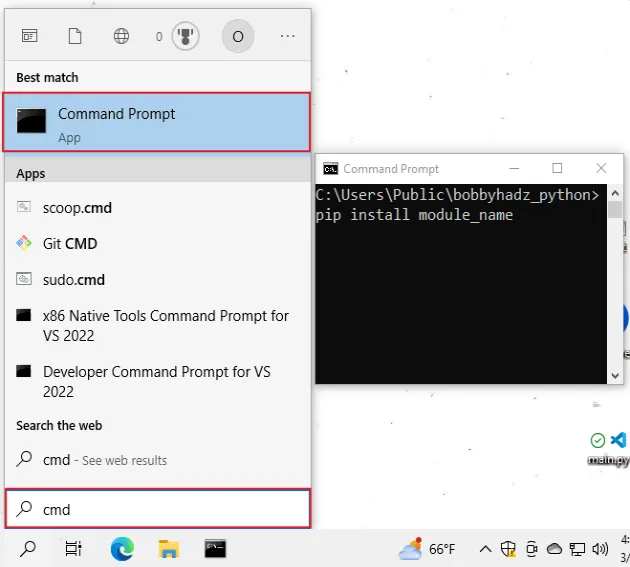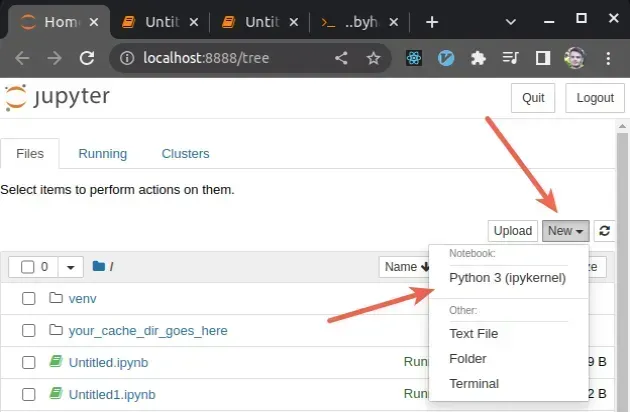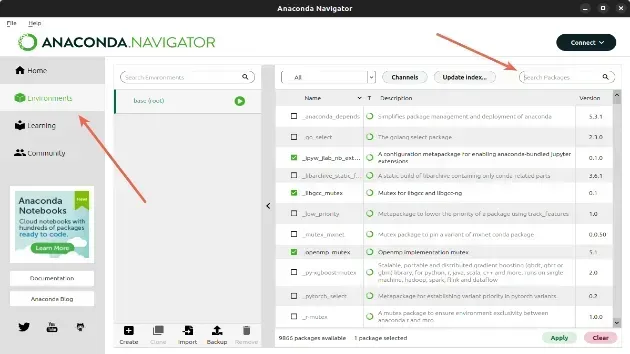No Module Named Cryptography
I. Overview of the “no module named cryptography” error
The “no module named cryptography” error is a common issue encountered by Python developers. It occurs when the Python interpreter cannot find the “cryptography” module, which is required for cryptographic operations such as encryption, decryption, and secure communication. This error prevents the execution of programs that rely on the cryptography module, leading to unexpected failures and disruptions in the code execution.
II. Possible causes of the “no module named cryptography” error
1. Missing or uninstalled cryptography module: If the cryptography module is not installed on your system, the Python interpreter will not be able to find and import it, resulting in the “no module named cryptography” error.
2. Outdated Python and pip versions: It is possible that your Python and pip versions are outdated, causing conflicts and compatibility issues with the cryptography module.
3. Conflicting packages or dependencies: In certain cases, there might be conflicting packages or dependencies that interfere with the proper functioning of the cryptography module, triggering the “no module named cryptography” error.
III. Solutions for resolving the “no module named cryptography” error
1. Reinstalling the cryptography module:
– Open your command prompt or terminal.
– Execute the following command: pip uninstall cryptography.
– After the uninstallation process, reinstall the module using the command: pip install cryptography.
2. Updating Python and pip versions:
– Check the current versions of Python and pip by executing the commands: python –version and pip –version.
– Visit the official Python website or use package managers like Anaconda or Homebrew to update to the latest versions.
– After the update, try importing the cryptography module again to see if the error is resolved.
3. Checking for conflicting packages or dependencies:
– Execute the command: pip list to view all installed packages and their versions.
– Look for any packages that might conflict with the cryptography module.
– If conflicts exist, consider uninstalling or updating the conflicting packages to resolve the issue.
– You may also consult the documentation or support resources for the conflicting package for further guidance.
IV. Reinstalling the cryptography module
If the “no module named cryptography” error persists, it might be necessary to completely remove and reinstall the module. Here’s how you can do it:
– Open your command prompt or terminal.
– Execute the following command to uninstall the cryptography module: pip uninstall cryptography.
– After the uninstallation process, install the module again using the command: pip install cryptography.
V. Updating Python and pip versions
Outdated Python and pip versions can often lead to compatibility issues with the cryptography module. Follow these steps to update them:
– Check the current versions of Python and pip by executing the commands: python –version and pip –version.
– Visit the official Python website or use package managers like Anaconda or Homebrew to update to the latest versions.
– After the update, try importing the cryptography module again to see if the error is resolved.
VI. Checking for conflicting packages or dependencies
Conflicting packages or dependencies can interfere with the proper functioning of the cryptography module. Here’s how you can identify and resolve conflicts:
– Execute the command: pip list to view all installed packages and their versions.
– Look for any packages that might conflict with the cryptography module.
– If conflicts exist, consider uninstalling or updating the conflicting packages to resolve the issue.
– Consult the documentation or support resources for the conflicting package for further guidance if needed.
VII. Seeking additional support and troubleshooting resources
If the “no module named cryptography” error persists despite following the above steps, it is recommended to seek additional support and consult available troubleshooting resources. The following keywords can help you find relevant information:
– Install crypto Python
– Install cryptography Python Windows
– ERROR: Failed building wheel for cryptography
– Cryptography Python
– From cryptography Fernet import Fernet
– From crypto.cipher import aes
– This version of cryptography contains a temporary pyOpenSSL fallback path upgrade pyOpenSSL now
– Pip install cryptono module named cryptography
Remember to stay on topic and cover the error resolution process in-depth, addressing potential causes and providing detailed solutions. By applying these troubleshooting techniques and seeking additional resources, you can resolve the “no module named cryptography” error and continue developing Python applications seamlessly.
No Crypto Module Named Crypto (Solved 100%)
Keywords searched by users: no module named cryptography Install crypto Python, Install cryptography Python Windows, ERROR: Failed building wheel for cryptography, Cryptography Python, From cryptography Fernet import Fernet, from crypto.cipher import aes, This version of cryptography contains a temporary pyOpenSSL fallback path upgrade pyOpenSSL now, Pip install crypto
Categories: Top 65 No Module Named Cryptography
See more here: nhanvietluanvan.com
Install Crypto Python
Python is a versatile programming language that is widely used for various purposes, including cryptocurrency development. To incorporate cryptography and perform cryptographic operations in Python, developers often rely on the cryptography library, also known as “crypto.” This library offers a range of cryptographic algorithms and functionalities that can be seamlessly integrated into Python projects. In this article, we will walk you through the process of installing crypto in Python and explore its key features and applications.
Why Use Crypto in Python?
Before delving into the installation process, it is crucial to understand the significance of incorporating cryptography into Python projects. Cryptography is essential for enhancing security and protecting sensitive data. Furthermore, with the rise of blockchain technology, the need for cryptographic operations has skyrocketed.
Crypto in Python allows developers to implement various cryptographic algorithms, including symmetric and asymmetric encryption, digital signatures, and hashing. These algorithms play a pivotal role in securing communications, verifying authenticity, and protecting data integrity.
Installing Crypto in Python
To install crypto in Python, follow these step-by-step instructions:
Step 1: Set Up Python environment
Ensure that you have Python installed on your system. Crypto supports Python versions 2.7, 3.4, and later. You can download the latest version of Python from the official website (https://www.python.org/).
Step 2: Install pip
Pip is a package management system that simplifies the installation of Python libraries. To install pip, open your command prompt or terminal and execute the following command: `python get-pip.py`. You can download get-pip.py from the official pip website (https://pip.pypa.io/en/stable/installing/).
Step 3: Install crypto
After installing pip, run the following command in your command prompt or terminal: `pip install crypto`. This command will automatically download and install the cryptography library on your machine.
Step 4: Verify installation
To ensure that the installation was successful, open your Python interactive shell and type `import crypto`. If no errors occur, the installation was successful.
Using Crypto in Python
Once you have successfully installed crypto, you can begin using it in your Python projects. Here are a few examples of how crypto can be employed:
1. Symmetric Encryption:
Crypto provides symmetric encryption algorithms, such as AES (Advanced Encryption Standard), to encrypt and decrypt data using a shared secret key. The following code snippet demonstrates how to perform symmetric encryption:
“`python
from crypto.Cipher import AES
from crypto.Random import get_random_bytes
key = get_random_bytes(16)
cipher = AES.new(key, AES.MODE_EAX)
plaintext = b”Sensitive data”
ciphertext, tag = cipher.encrypt_and_digest(plaintext)
“`
2. Asymmetric Encryption:
Crypto supports asymmetric encryption algorithms like RSA (Rivest-Shamir-Adleman), which involve the use of a public-private key pair. The following code snippet showcases how to employ RSA for encryption:
“`python
from crypto.PublicKey import RSA
from crypto.Cipher import PKCS1_OAEP
key = RSA.generate(2048)
cipher = PKCS1_OAEP.new(key.publickey())
ciphertext = cipher.encrypt(b”Sensitive data”)
“`
3. Hashing:
Crypto offers various hashing algorithms, including SHA-256 and SHA-512, which can generate fixed-size hash values. The following code demonstrates how to compute the SHA-256 hash of a message:
“`python
from crypto.Hash import SHA256
message = b”Hello World”
hash_object = SHA256.new(message)
hash_value = hash_object.hexdigest()
“`
FAQs
Q1. Can I install crypto on any operating system?
Yes, crypto is compatible with major operating systems, including Windows, macOS, and Linux.
Q2. Do I need any prior knowledge of cryptography to use crypto in Python?
While basic knowledge of cryptographic concepts is useful, the crypto library provides a high-level interface that simplifies cryptographic operations, making it accessible to developers with limited cryptography expertise.
Q3. Are there any alternatives to crypto for performing cryptographic operations in Python?
Yes, there are alternative libraries like PyCrypto and M2Crypto. However, the cryptography library (crypto) is often preferred due to its modern design, ease of use, and better performance.
Q4. Is crypto actively maintained and updated?
Yes, the crypto library is actively maintained by a team of contributors and undergoes regular updates. It ensures that the library stays secure and up to date with the latest cryptographic standards and practices.
Q5. Can I use crypto to encrypt files or entire directories?
Yes, crypto provides various functionalities to encrypt files and directories. You can use appropriate algorithms and techniques to safeguard your data in Python.
Conclusion
Installing and utilizing the crypto library in Python opens up a world of possibilities to incorporate robust cryptographic functions in your projects. With its wide range of algorithms and functionalities, crypto assists developers in enhancing the security of their applications, securing communications, and protecting sensitive data. By following the installation guide provided in this article, you can leverage the power of cryptography and Python to deliver secure and reliable software solutions.
Install Cryptography Python Windows
Cryptography plays a crucial role in ensuring the security and integrity of data in various fields, from communication and finance to healthcare and government sectors. With the widespread use of Python as a programming language, it is essential for developers to have the ability to add cryptographic capabilities to their applications. In this article, we will explore how to install cryptography Python on Windows, enabling you to incorporate cryptographic functionality into your Python projects.
Why Install Cryptography Python on Windows?
Windows, being one of the most popular operating systems, is used by millions of developers worldwide. By installing cryptography Python on Windows, you can leverage the vast array of cryptographic libraries and features available in the Python ecosystem. Whether you are building secure communication channels, encrypting files, or implementing secure authentication mechanisms, cryptography Python offers a comprehensive set of tools and algorithms to help you achieve your goals.
Prerequisites for Installing Cryptography Python
Before diving into the installation process, there are a few prerequisites to have in place:
1. Python: Ensure that you have Python installed on your Windows machine. You can download the latest version of Python from the official Python website (https://www.python.org/downloads/windows/). Choose the appropriate installer based on your Windows architecture (32-bit or 64-bit), and follow the installation instructions.
2. Pip: Pip is the package installer for Python and is often bundled with the Python installation. To check if you have Pip installed, open your command prompt (CMD) and type “pip.” If you receive a response displaying information about Pip, you are ready to proceed. Otherwise, you can download and install Pip by following the instructions at https://pip.pypa.io/en/stable/installing/.
Installing Cryptography Python on Windows
Once you have fulfilled the prerequisites, follow these steps to install the cryptography Python library:
1. Open your command prompt (CMD) by pressing the Win key and typing “CMD” in the search bar. Select the command prompt application from the search results.
2. In the command prompt, type the following command to install cryptography via Pip:
“`
pip install cryptography
“`
3. Press Enter and let Pip handle the installation process. It will download and install the cryptography library along with its dependencies.
4. Once the installation is complete, you can verify the installation by importing the cryptography module in a Python script:
“`python
import cryptography
“`
5. If the import statement executes without any errors, cryptography Python is successfully installed on your Windows machine.
Frequently Asked Questions (FAQs)
Q1. Is cryptography Python compatible with all versions of Windows?
A1. Yes, cryptography Python is compatible with all major versions of Windows, including Windows 7, 8, and 10.
Q2. Can cryptography Python be used with other programming languages?
A2. Cryptography Python is primarily designed for Python projects. However, cryptographic libraries often offer interoperability with other programming languages. You can explore the documentation and community support to integrate cryptography Python with other languages if needed.
Q3. Are there any alternative cryptographic libraries for Python?
A3. Yes, there are alternative cryptographic libraries for Python, such as PyCrypto, M2Crypto, and PyCryptodome. Each library has its own set of features and advantages, so choosing the right library depends on your specific requirements.
Q4. How can I upgrade cryptography Python to the latest version?
A4. To upgrade cryptography Python to the latest version, use the following command in your command prompt:
“`
pip install –upgrade cryptography
“`
Q5. Are there any security concerns when using cryptography Python?
A5. Cryptography Python is maintained by a community of developers who continuously address security vulnerabilities and release updates. It is always recommended to keep your Python environment and libraries up to date to ensure the latest security patches are applied.
In conclusion, installing cryptography Python on Windows allows you to harness the power of cryptographic algorithms and tools within your Python projects. By following the installation steps outlined in this article, you can enhance the security of your applications and protect sensitive data from unauthorized access. Remember to stay up to date with the latest versions and security updates to ensure your cryptographic implementations are robust.
Images related to the topic no module named cryptography

Found 37 images related to no module named cryptography theme





























![Fixed] ModuleNotFoundError: No module named 'google' – Be on the Right Side of Change Fixed] Modulenotfounderror: No Module Named 'Google' – Be On The Right Side Of Change](https://blog.finxter.com/wp-content/uploads/2021/12/image-37.png)

![Modulenotfounderror: no module named cryptodome [Solved] Modulenotfounderror: No Module Named Cryptodome [Solved]](https://itsourcecode.com/wp-content/uploads/2023/02/pip-list-1.png)






![Fixed] ModuleNotFoundError: No module named 'cryptography' – Be on the Right Side of Change Fixed] Modulenotfounderror: No Module Named 'Cryptography' – Be On The Right Side Of Change](https://blog.finxter.com/wp-content/uploads/2021/01/Christian_Mayer-Kopie-2.jpg)

![SOLVED] Modulenotfounderror: no module named cryptography Solved] Modulenotfounderror: No Module Named Cryptography](https://itsourcecode.com/wp-content/uploads/2021/01/IT-SOURCECODE_ICON-07.jpg)





Article link: no module named cryptography.
Learn more about the topic no module named cryptography.
- No module named ‘cryptography’ – Python – bobbyhadz
- ImportError: No module named ‘cryptography’ – Stack Overflow
- [Fixed] ModuleNotFoundError: No module named ‘cryptography’
- Modulenotfounderror: no module named cryptography
- How to Install cryptography in Python? – Finxter
- Cryptography – The Hitchhiker’s Guide to Python
- How can I fix the ‘module not found’ error in Python? – Gitnux Blog
- What is the difference between pycrypto and crypto packages in …
- How to fix ModuleNotFoundError: No module named ‘Crypto …
- ModuleNotFoundError: No module named ‘Crypto’ in Python
- Error on “superset/utils/core.py”: No module named … – GitHub
- Error: No module named cryptography.utils – Google Groups